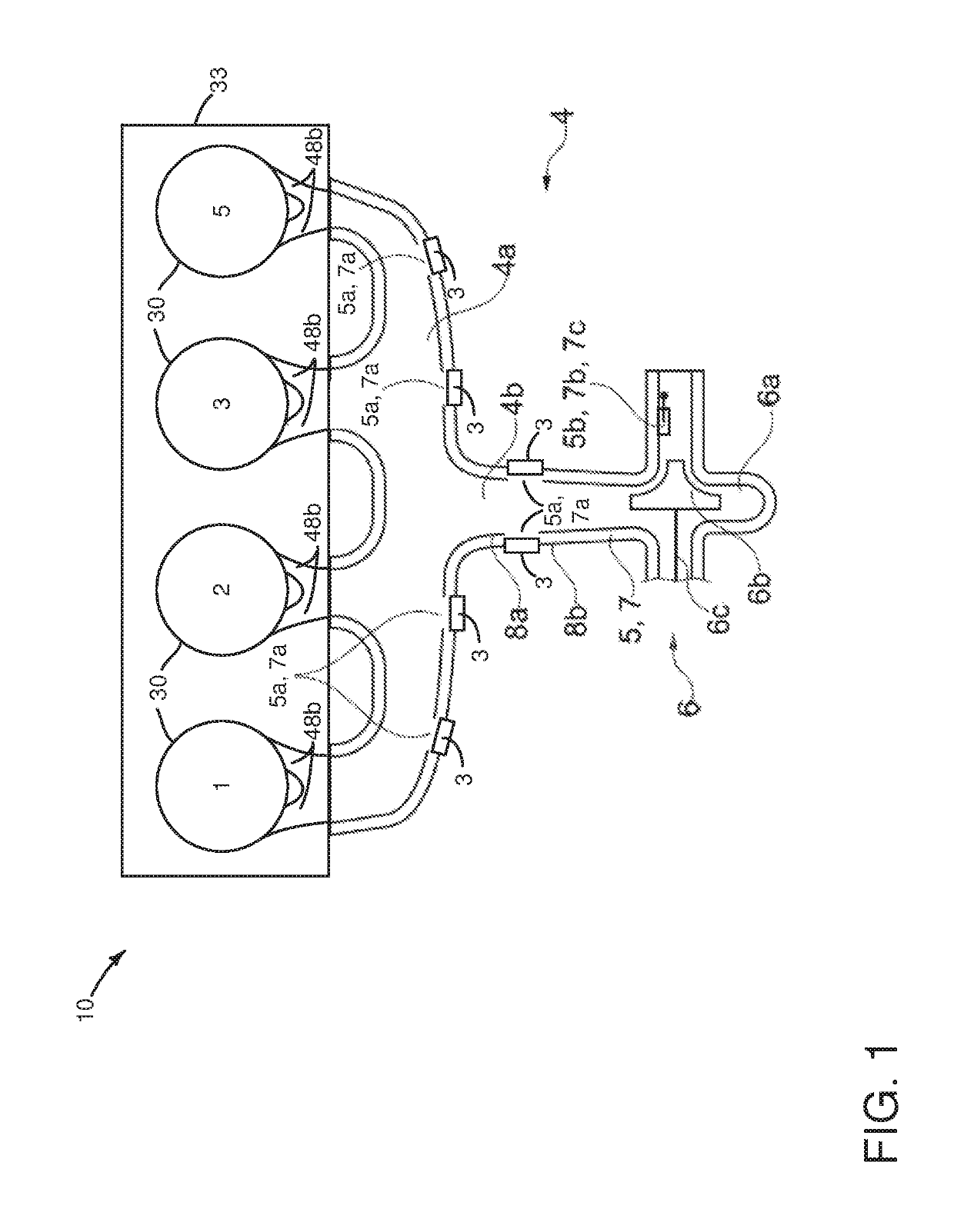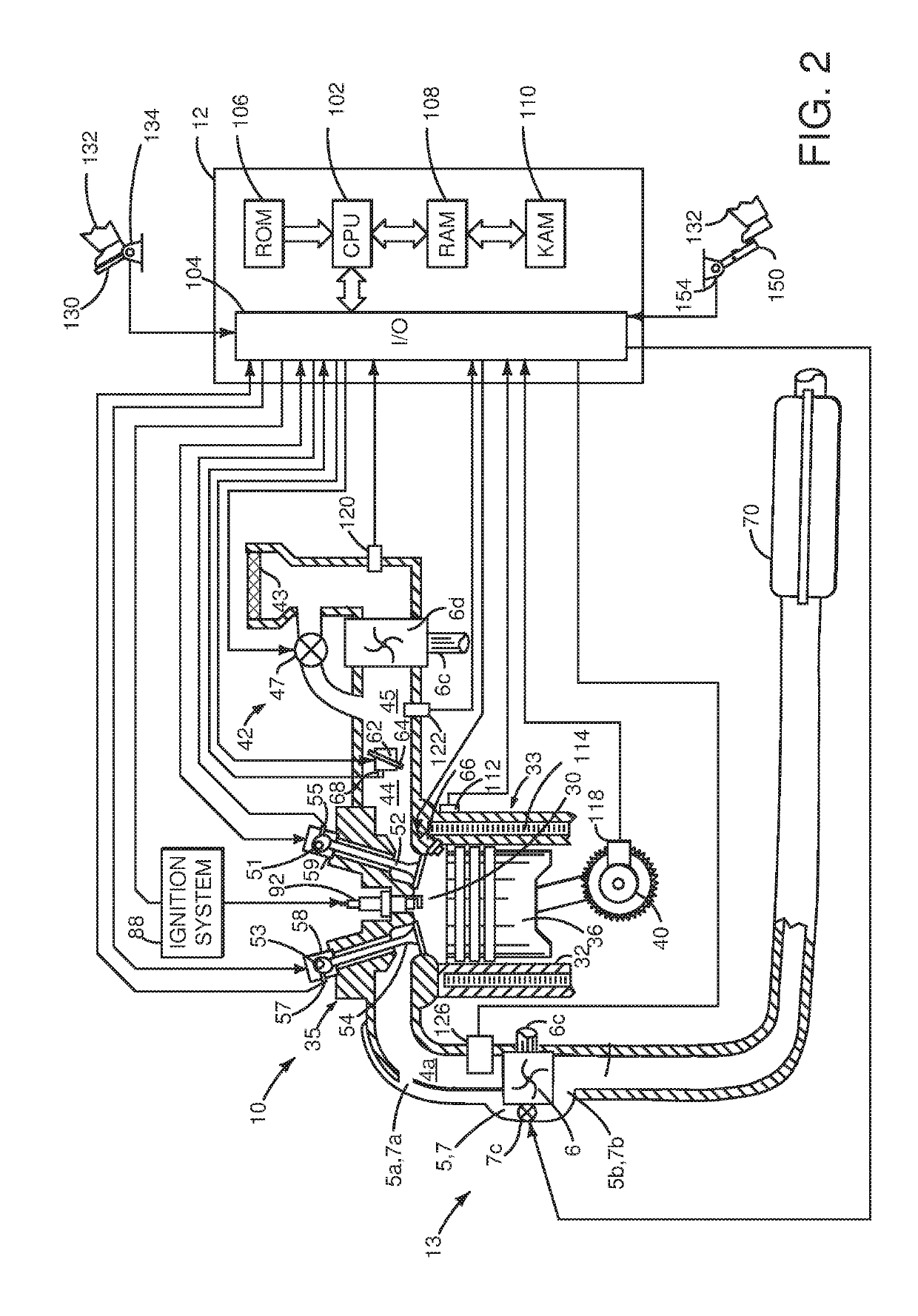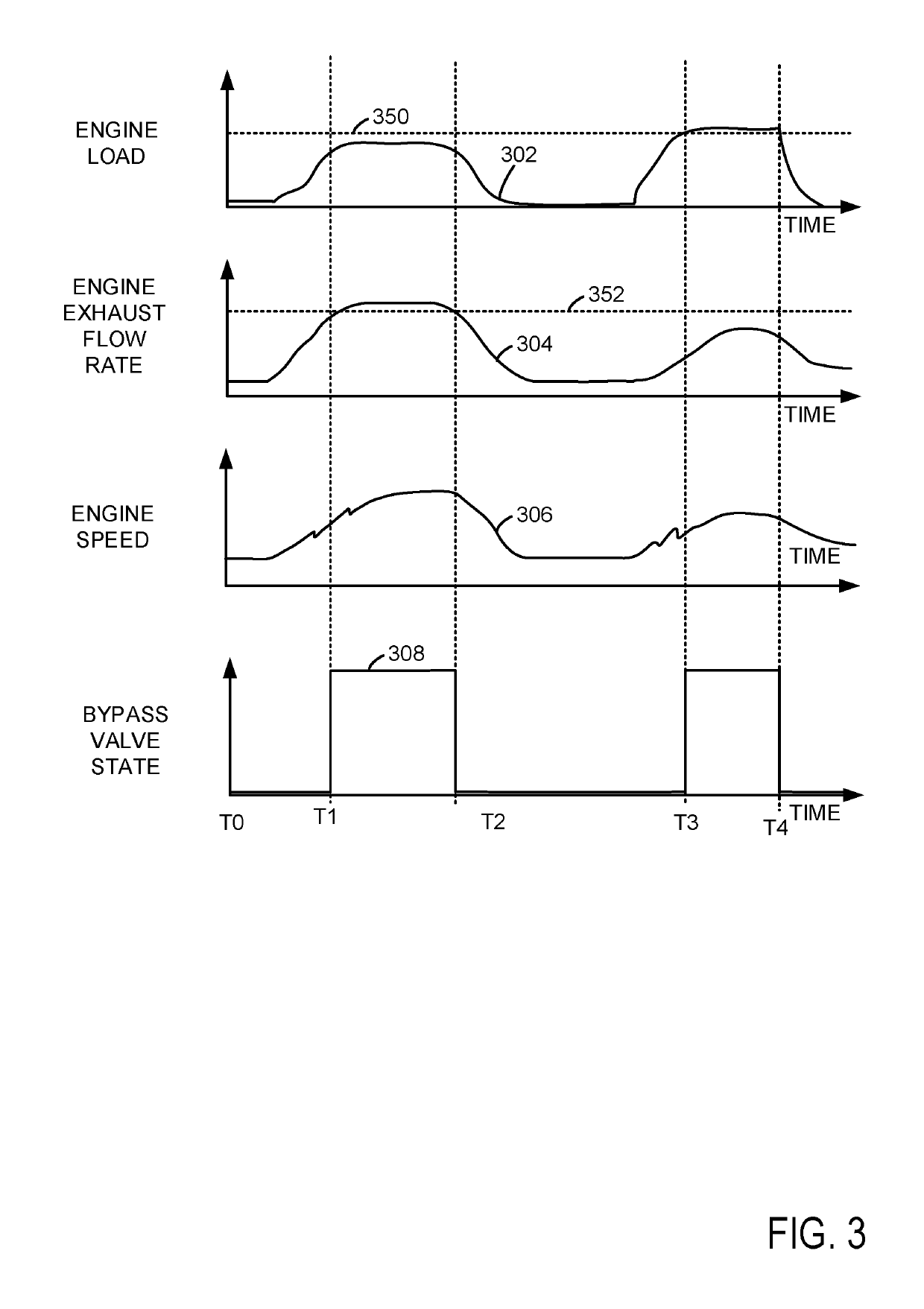Internal combustion engine with exhaust-gas turbocharging arrangement
a technology of internal combustion engine and turbocharging arrangement, which is applied in the direction of combustion engine, machine/engine, engine fuction, etc., can solve the problems of reducing output power, affecting efficiency, and observing noticeable torque drop, so as to reduce engine emissions, improve heat retention, and reduce the temperature increase of engine components
- Summary
- Abstract
- Description
- Claims
- Application Information
AI Technical Summary
Benefits of technology
Problems solved by technology
Method used
Image
Examples
Embodiment Construction
[0036]The present description is related to improving operation of a turbocharged engine. The engine may be configured as shown in FIG. 1. The engine may be included in a system as shown in FIG. 2. The engine and engine system may operate as is shown in FIG. 3. The system may be operated via a controller according to the method of FIG. 4.
[0037]Along with the already stated object, it is a further sub-object of the present invention to specify a method for operating a supercharged internal combustion engine of the stated type. The exhaust-gas discharge system of the internal combustion engine according to the invention is equipped with at least one cavity, which can be utilized, that is to say used, selectively and as required as thermal insulation or as a bypass or bypass line of the wastegate turbine. To be able to serve as a bypass for the wastegate turbine, the at least one cavity is at least connectable, that is to say is connectable for a limited time as required or is permanen...
PUM
 Login to View More
Login to View More Abstract
Description
Claims
Application Information
 Login to View More
Login to View More - R&D
- Intellectual Property
- Life Sciences
- Materials
- Tech Scout
- Unparalleled Data Quality
- Higher Quality Content
- 60% Fewer Hallucinations
Browse by: Latest US Patents, China's latest patents, Technical Efficacy Thesaurus, Application Domain, Technology Topic, Popular Technical Reports.
© 2025 PatSnap. All rights reserved.Legal|Privacy policy|Modern Slavery Act Transparency Statement|Sitemap|About US| Contact US: help@patsnap.com



